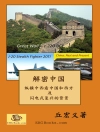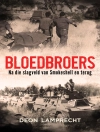The first systematic study of the concept of shame from 1600-1900, showing good and bad behaviour, morality and perceptions of crime in British society at large. Single episodes in the history of shame are contextualized by discussing the historiography and theory of shame and their implications for the history of crime and social relations.
Tabella dei contenuti
Acknowledgments Notes on Contributors The History and Theory of Shame – Then and Now Private Passions and Public Penance: Popular Shaming Rituals in Pre-Modern Britain The Shame and Fame of Half-Hangit Maggie: Attitudes to the Child Murderer in Early Modern Scotland ‘To Make Men of their Honesty Afraid’: Shaming the Ideological Dissident 1650-1834 Conservatives, Humanitarians and Reformers Debate Shame The Everyday Life of a Wexford Parson: The Rev. William Hughes’ Taste for Drink, Blasphemy, Indecent Exposure, Criminal Damage, Bestial Voyeurism and Field Sports ‘The Woman in the Iron mask’: From Low Life Picaresque to Bourgeois Tragedy – Matrimonial Violence and the Audiences for Shame ‘Writing Cuckold on the Forehead of a Dozen Husbands’: Mid-Victorian Monarchy and the Construction of Bourgeois Shame Conclusion: Reconciling Shame with Modernity Bibliography
Circa l’autore
DAVID NASH is Professor of History at Oxford Brookes University, UK. He has published widely on the history of Secularism in Britain. Most recently he has published internationally renowned works on the history of blasphemy in Britain and the Christian world and other works on the relationship between crime, law and culture.
ANNE-MARIE KILDAY is Principal Lecturer in History at Oxford Brookes University, UK. She has written on the history of women’s criminality (such as infanticide) and violent crime since the seventeenth century in Scotland as well as in wider comparative contexts. She has published numerous articles; has contributed to a number of edited collections and has hosted a number of recent conferences on crime and related subjects.












